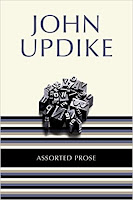 Good news for Turkish readers! Ali Volkan Erdemir's translation of Dance, dance, dance was just published by Doǧan Kitap.
Good news for Turkish readers! Ali Volkan Erdemir's translation of Dance, dance, dance was just published by Doǧan Kitap.Volkan shares below some thoughts about his experience with this translation:
"I have been translating Murakami's works into Turkish since 2015 and Dance Dance Dance is my tenth translation. Published in 1988, it is one of my favorites. While translating, I felt connected most of the characters such as "boku," Yuki, and Dick North, but the Sheep Man is always special for his pure heart. Just as the Sheep Man finds peace in his own world, I find peace in Murakami's world. Hopefully my bond will always continue with future translations."
In this same e-mail, Volkan mentioned that he would be translating Pinball, 1973 next. This reminded me of some translation-related problems I ran into when I working on that book, which required me to contact a number of Polish pinball aficionados for help with terminology for different parts of pinball machines. Never having played pinball before, I also went to an arcade to be able to see for myself how pinball machines work (it turns out I was not very good!). And as I was reading about different types of machines in the novel, I searched for some of them by name on the Internet to see what they looked like. Here I ran into a problem with the ace of spades.
Here is the problematic passage in question, in two English translations:
Alfred Birnbaum (1985):
"Kings and Queens," a model with eight roll-over lanes. A beautifully mustached, crewcut, nonchalant-looking Western gambler, with an ace hidden behind his spur."
Ted Goossen (2015):
"Gottlieb's Kings & Queens, the model with eight rollover lanes. It featured a Western Gambler with a manicured mustache, a nonchalant expression, and an ace of spades tucked in his suspenders."
In the original Japanese the second sentence says, "Kuchihige o kirei ni kariageta noncharan na kaotsuki no seibu no gyanburā, kutsushitadome ni kakushita supēdo no ēsu."
Literally, this gives us something like, "A Western gambler with a beautifully trimmed mustache, a nonchalant expression, and an ace of spades hidden in (or: under) [his] sock garter."
So where exactly is the ace of spades?
Let's look at a picture of the machine in question, which shows three none-too-honest players involved in a game of poker:
It appears that the gambler seated in the purple jacket has an ace of hearts hidden in his right sleeve, but if he is wearing sock garters, or suspenders, or spurs, these are nowhere in sight. Looking around the table, though, we indeed find the ace of spades -- hidden in the cleavage of the blonde on the left!
In such a situation -- where it appears that the author's memory has deceived him -- what should a translator do? Change the text to accord with the image on the machine? Leave it alone and hope that no one catches the mistake? Provide a footnote? (I left it alone in the Polish translation, which came out in 2014, translating the passage as "hidden in his garter," which the editor later changed to "hidden in his sock," feeling that reaching up two one's garter to extract the ace would be too noiticeable)
This experience also reminds me what a difference the Internet makes in a translator's life. When Alfred Birnbaum was translating the book thirty-five years ago, he had no option of just Googling the machine in question. He could only frequent game arcades in the hopes of spotting one, following Boku's example.








